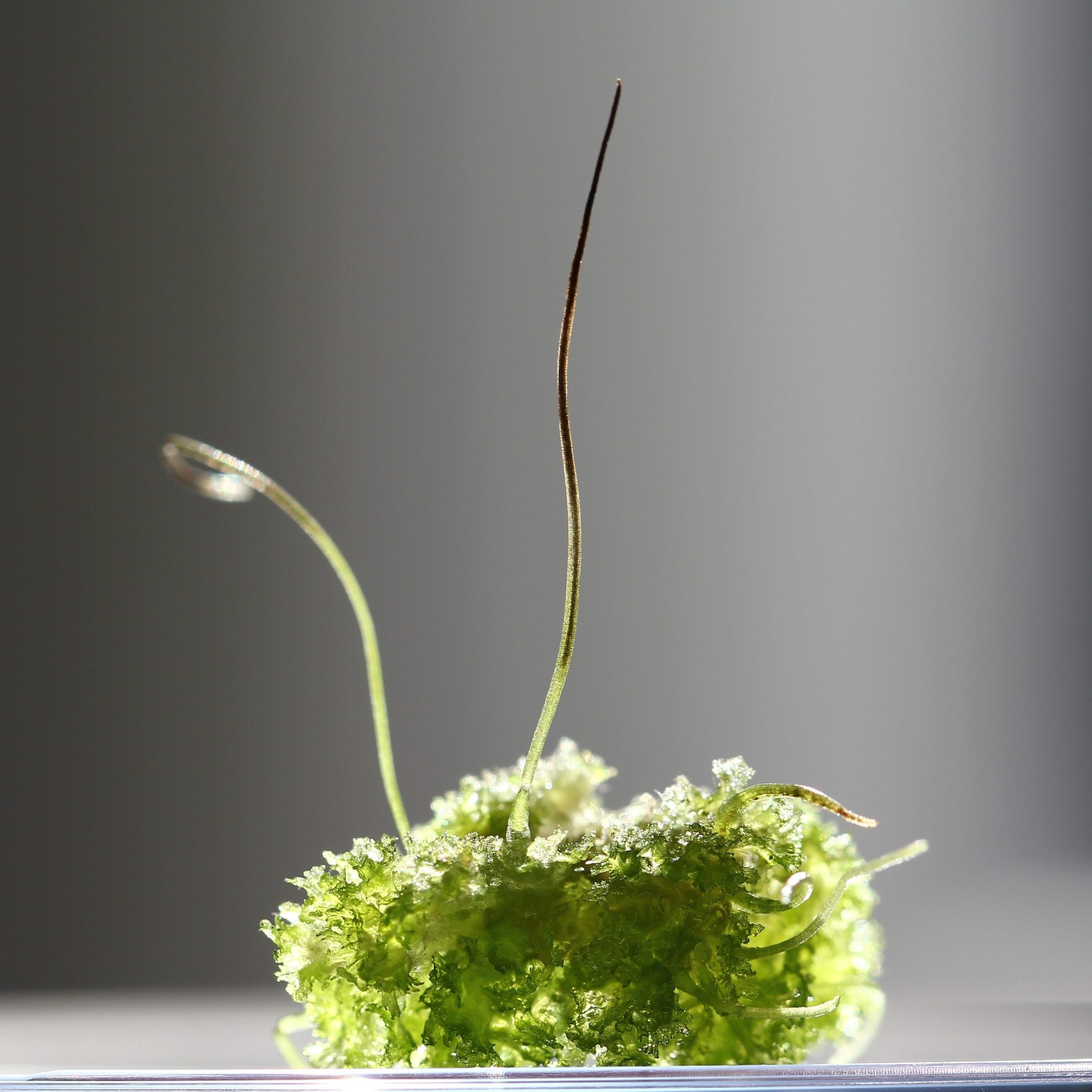News
Hornwort Genomes Could Lead to Crop Improvement

Researchers sequenced the genomes of three hornworts, including this Anthoceros agrestis. These ancient plants hold evolutionary secrets that could help crops grow more efficiently with less fertilizer. Image credit: Eftychis Frangedakis
Some 500 million years ago – when our continents were likely connected in a single land mass and most life existed underwater – hornworts were one of the first groups of plants to colonize land. But biologists have never understood much about the genetics of these ancient plants, which have very unique biology.
Fay-Wei Li from the Boyce Thompson Institute, Péter Szövényi from the University of Zurich and researchers from across the globe sequenced the genomes of three hornworts, illuminating the dawn of land plants. The group also discovered genes that likely underpin the plants’ special methods of acquiring carbon and nitrogen.
The findings could lead to the development of crops that produce higher yields with the use of less synthetic fertilizer.
“We know life is basically built by carbon, nitrogen and phosphorus – those are key to increasing agricultural yields,” said Li, BTI faculty member and a corresponding author of the paper. “If we can unlock hornworts’ secrets, then we might be able to transfer those traits to agriculturally important plants.”
The results were published in the journal Nature Plants on March 13.
The research team began the project in 2011, said Szövényi, a researcher at the University of Zurich and the other corresponding author of the paper. “It took us three years to figure out how hornworts can be grown and pushed through its sexual life cycle under laboratory conditions, and another three years to properly assemble and annotate its genome. It was really hard to crack!”
One of the researchers’ goals was to find genes that play a role in hornworts’ method of concentrating carbon dioxide inside chloroplasts, which boosts the plants’ ability to make sugar. Hornworts are unique among land plants in this capability, but some species of algae share the trait. The team thus compared the hornwort genomes with those of algae and found one gene, LCIB, that is shared by the two groups of plants but not with other land plants.
“If this carbon-concentrating mechanism could be installed in crop plants, then they could grow larger with the same amount of fertilizer,” said Li, who is also an adjunct assistant professor of plant biology at Cornell University.
The group also identified 40 genes that may promote the hornworts’ source of nitrogen, which comes from a symbiotic relationship with cyanobacteria. “That’s a really unique function,” Li said. ”Very few plants can do this.”
 If crop plants could be developed to have a similar symbiotic relationship with cyanobacteria, then farmers could use less nitrogen fertilizer, said Li. Such a reduction in fertilizer could benefit the environment because excess agricultural nitrogen frequently enters waterways, where it can cause deadly algal blooms.
If crop plants could be developed to have a similar symbiotic relationship with cyanobacteria, then farmers could use less nitrogen fertilizer, said Li. Such a reduction in fertilizer could benefit the environment because excess agricultural nitrogen frequently enters waterways, where it can cause deadly algal blooms.
Li plans to further study these genes as part of a recent EDGE grant from the National Science Foundation, which seeks to develop technologies for determining the functions of hornwort genes. “Once we have the genetic tools then we will be able to investigate the roles of these genes in hornworts’ unconventional ways of sourcing carbon and nitrogen,” Li said.
The research also shed light on the evolution of early land plants. Hornworts, liverworts and mosses were among the first plants to colonize land, but how the three groups were related had not been clear.
“In terms of the relationship of land plants, there has been a huge debate of where hornworts sit,” Li said. “Here, we have strong evidence that hornworts, liverworts and mosses are all more closely related to each other than they are to vascular plants. We also show that liverworts and mosses are more closely related to each other than to hornworts.”
“The data we generated fill a really important gap in how we try to understand the evolution of land plants,” added Li.
The research was supported by the National Science Foundation (grant number DEB1831428).
Subscribe to BTI's LabNotes Newsletter!
Contact:
Boyce Thompson Institute
533 Tower Rd.
Ithaca, NY 14853
607.254.1234
contact@btiscience.org
Copyright © 2023 | Boyce Thompson Institute | All rights reserved | Privacy Policy | Cookie Policy


